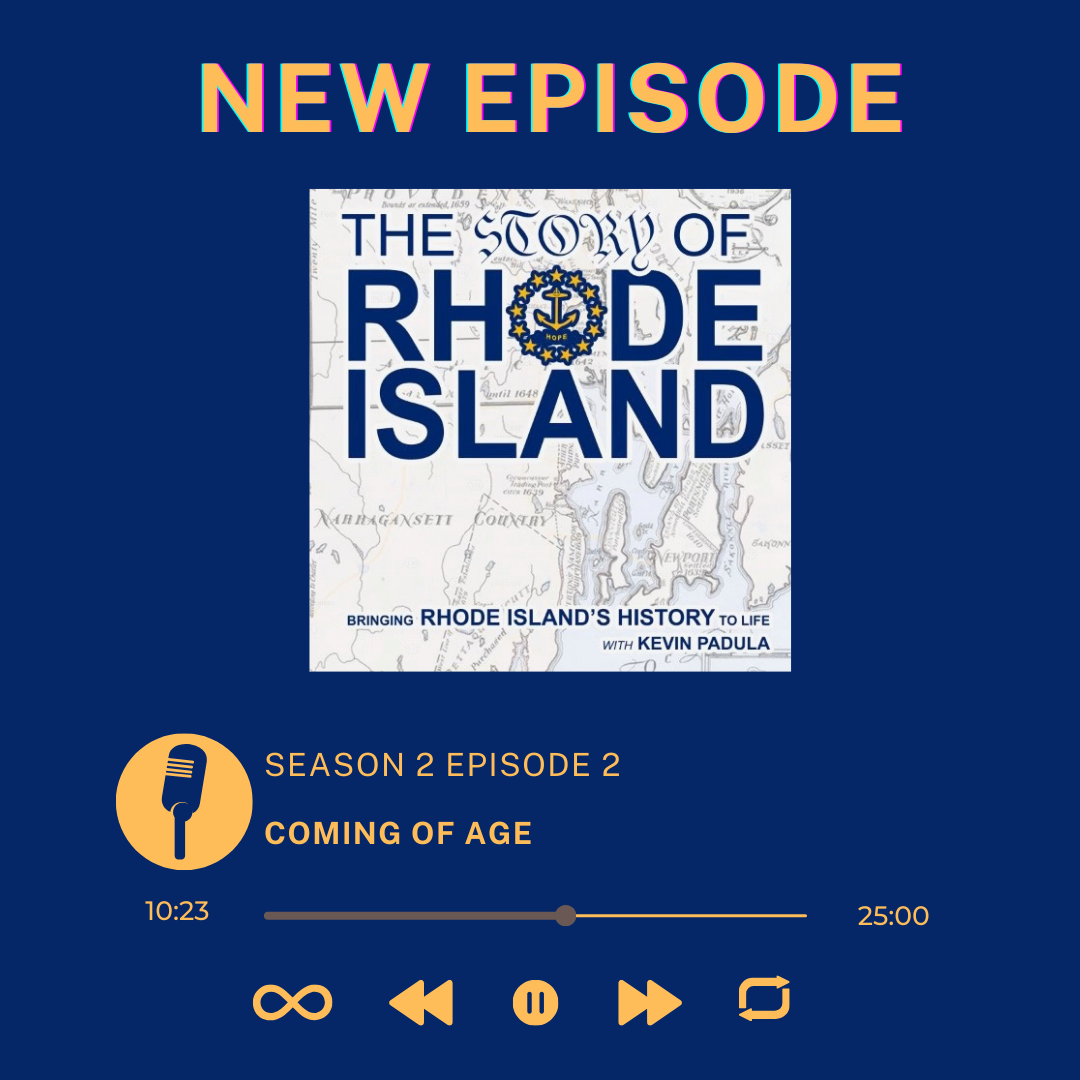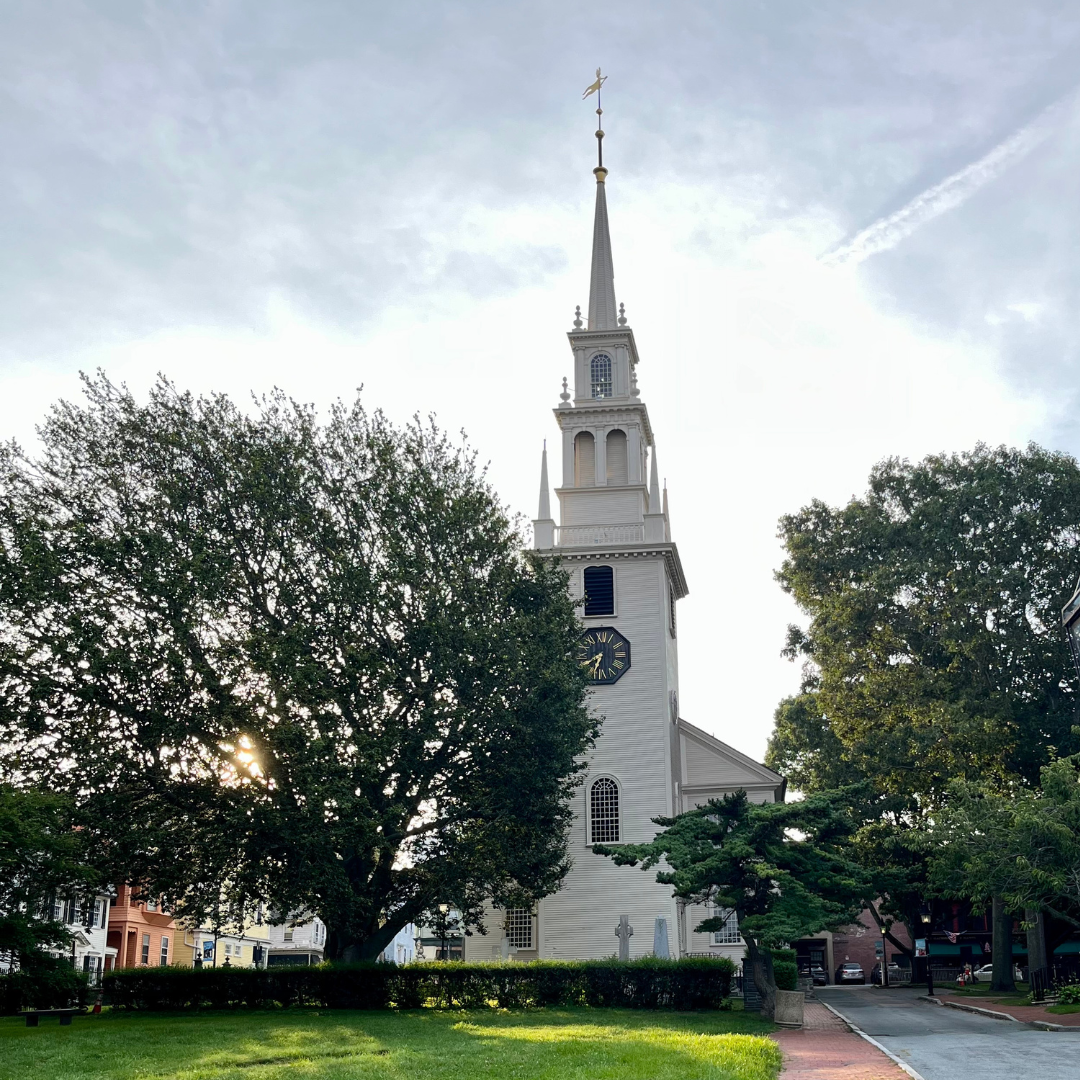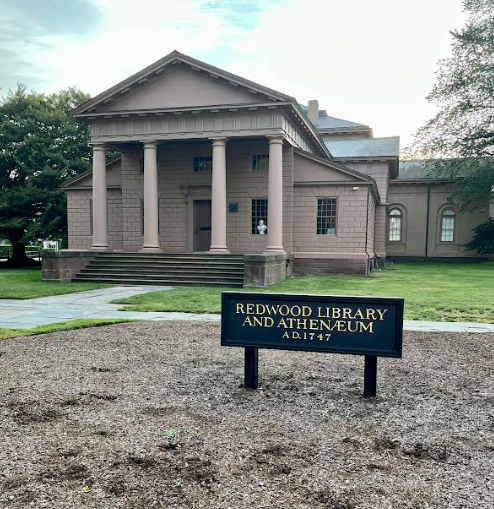Governor Samuel Cranston helps Rhode Island overcome challenges that have plagued the colony since its founding, enabling it to develop a thriving economy.
23 minutes | 1698 - 1762
Hear About:
📜How Governor Samuel Cranston prevented Rhode Island from having its charter revoked.
📜How Rhode Island changed drastically from the late 17th century to the mid 18th century.
📜What Rhode Island's economy looked like in the 18th century leading up to the Revolutionary War.

Governor Samuel Cranston
Lord Bellomont
The Governor of New Hampshire, Massachusetts, and New York and a man who came incredibly close to getting Rhode Island's charter revoked.
Image credit: Samuel Smith Kilburn (d. 1903) - New York Public Library digital library: http://digitalgallery.nypl.org/nypldigital/id?423861
Rowland Robinson
One of the wealthiest Narragansett Planters of present day South County.

Trinity Church | Newport, RI
If you've ever visited Newport then odds are you've noticed a tall steeple towering over the city. The steeple is part of a church known as the Trinity Church and it was built back in 1726 for the Anglican community that had been worshipping together since 1698. The church is one of the many beautiful buildings that were built while Newport was one of the biggest hub for seaborne trade in the American colonies.

Redwood Library | Newport, RI
The Redwood Library (1747) is America's first purpose-built library in the United States. It was built with the hopes of spreading knowledge to the Newport community. The namesake of the library is Abraham Redwood, a wealthy merchant, plantation owner, and slave trader. The buildings beautiful architecture is a wonderful example of the signicant growth the Rhode Island economy experienced during the first half of the 18th century. Unfortunately, it also reminds us how a significant portion of that wealth was made off of the slave trade.
-1.png)
Narragansett Country | South County, RI
The land we know today at Washington County and the lower half of Kent County was once referred to as "Narragansett Country", named after the Narragansett Nation that once ruled this region. Eventually, this region was turned into a thriving agricultural economy and home to a wealthy group of plantation owners, known as the Narragansett Planters. By this time, the indigenous tribes of Rhode Island were driven off of their land and forced to live on a small piece of land in Charlestown.
.png)
John Potter III's Tavern | Kingston, RI
In 1755 John Potter III purchased land along Kingston's, then known as Little Rest, Main Street and built a tavern. Along with being a tavern owner, Potter was also a tanner and a member of the King's County, known today as Washington County, militia. Potter passed away in 1771 and the tavern would eventually become known as Kingston Inn.


The Triangle Trade
During the 18th century Rhode Island profited greatly from the Triangle Trade. It started with livestock & crops being sent from Narragansett Country (present day South County) to coastal towns like Newport & Bristol. Merchants would then take the livestock & crops along with Rhode Island's famous rum and ship it out to West Africa. In West Africa, the rum was sold off and slaves were purchased. Then, the livestock, crops, and newly acquired slaves were sold off or traded in the Caribbean Islands for molasses that would once again be used in Rhode Island to make rum.


The American Rhode Island Slave Trade
In her book "Dark Work: The Business of Slavery in Rhode Island" Christy Clark-Pujara discusses how such a large portion of Rhode Islands economy was in one way or another tied to the business of slavery. In fact, Rhode Island was so heavily invested in the trading of human lives that historian Jay Coughtry argues that "the North American trade in slaves was essentially the Rhode Island slave trade".
- Rhode Island's Founders: From Settlement to Statehood by Patrick T. Conley
- Dark Work: the Business of Slavery in Rhode Island by Christy Clark-Pujara
- A History of the Narragansett Tribe of Rhode Island by Robert A. Geake
- Rhode Island: A History by William G. McLoughlin
- A History of Kingston, R.I., 1700 - 1900 by Christian McBurney
- Colonial Rhode Island: A History by Sydney V. James
- History of East Greenwich, Rhode Island, 1677-1960: With related genealogy by Martha R. McPartland (Author), S. Jerome Hoxie (Illustrator)
- The Narragansett Planters: Commercial Agriculture in Colonial South County by Tim Cranston
- Rogue’s Island: a Haven for Buccaneers by Seewesterly
- Rhode Island Dominates North American Slave Trade in 18th Century by Fred Zilian
- A History that Cannot be Ignored – Examining Slavery in Rhode Island by Seewesterly